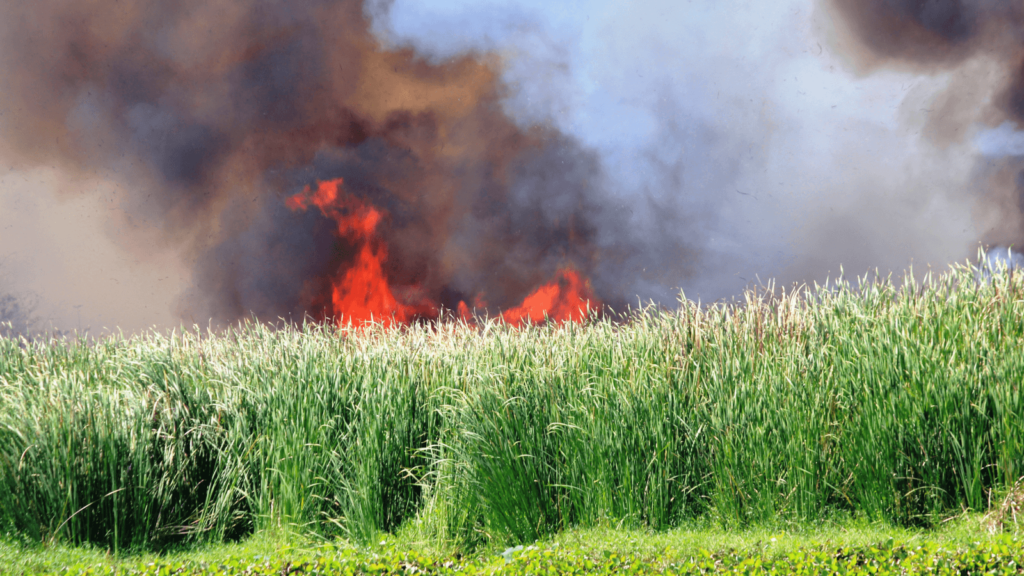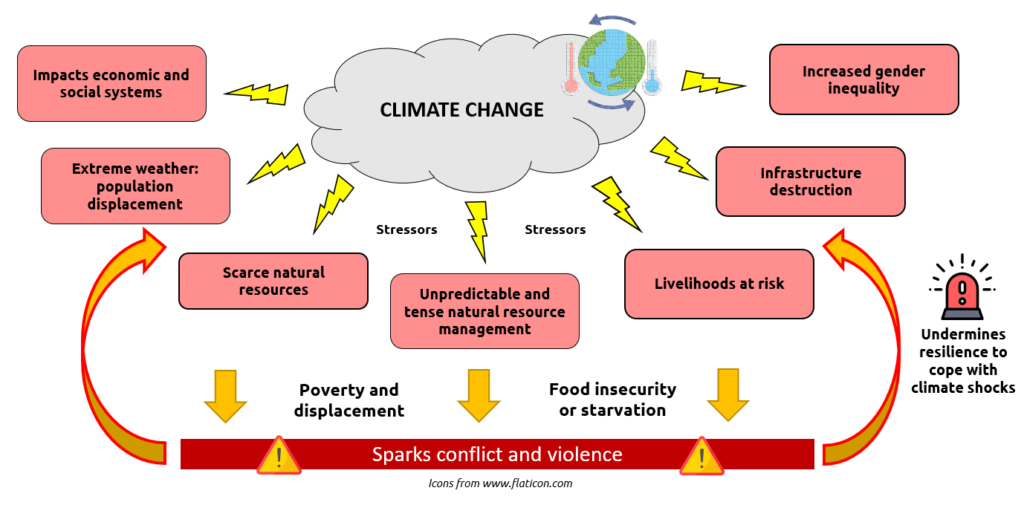
Armed conflict and the environment
8 October 2021
The destruction and degradation of the natural environment remains a largely hidden effect of hostilities. Such destruction and degradation, in turn, contribute to the increased vulnerability of the populations already affected by conflict. Even though international humanitarian law (IHL) protects the natural environment and contains provisions to limit the damage caused to it (1), its scope often reveals insufficient and armed conflict remains one of the major causes of environmental degradation.
Over the years, Geneva Call has witnessed first-hand this degradation. In most of the countries in which we are working, from the Democratic Republic of the Congo to Colombia or Myanmar, parties to armed conflicts have harmed the environment in order to weaken the enemy or gain resources. Many cases of water poisoning, poaching, logging and crop burning are being reported all around the world and all contribute to increase the vulnerability of the populations that depend on these resources to survive.
The environment is degraded in many ways. It is directly attacked or suffers incidental damage due to the use of certain weapons and tactics of war, such as the use of explosive devices or the setting ablaze of oil fields. It is also impacted by damage to or destruction of the built environment, for example when fighting disrupts water, sanitation or electricity services or hinders the infrastructure that enables them to operate. At the same time, deadly landmine contamination may also contribute to climate risks, including pollution to the soil and water by introducing non-biodegradable and toxic waste and threats to biodiversity by eroding soil, and destroying vegetation or animals during explosions.
Conflict-related environmental damage, coupled with the negative environmental impact of limitless lumber and extractive activities supporting the war economy and socio-economic fragility, threaten people’s health, livelihoods and security, and eventually weaken any peace efforts. In addition, as environmental damage and changing weather patterns impact harvests around the world, violent conflicts related to natural resource management and land tenure security are becoming more visible as a key common challenge now is having enough to eat.

Preventing such conflict-related environmental damage is therefore an essential contribution to Geneva Call’s mission. Around the world, our organization is raising awareness on specific IHL rules related to the protection of the natural environment and advocates for better compliance to these rules by armed non-State actors. In Myanmar, for example, Geneva Call is launching an innovative project aiming to raise awareness of indigenous, local, regional and international civic actors, decision makers and fighting forces to the importance of collaborative response to prevent and manage climate change-influenced crises and conflict. Importantly, our new Deed of Commitment on the Prevention of Starvation and Addressing Conflict-related Food Insecurity stresses the linkages between food security and the environment and includes many provisions that also serve to protect the environment. We are also developing specific training and dissemination material to ensure this topic is well understood and accepted by all stakeholders, and ultimately that the natural environment does not remain a hidden victim of contemporary armed conflicts.
___
(1) International Humanitarian Law protects the environment in armed conflict in two different ways:
General protection of the environment
First, the environment is protected by the general principles governing the conduct of hostilities:
- Distinction: The environment and all its parts are of civilian nature and cannot be the object of attack, unless some parts of the natural environment have been transformed into a military objective. For example, when fighters use vegetation for concealment.
- Proportionality: Environmental damage must be taken into account when assessing the proportionality of an attack against a military objective as incidental damage. If incidental damage is higher than military advantage, attacks must be cancelled.
- Precautionary measures: Every practicable precaution -both passive and active- should be taken to avoid and, in any case, to minimize, any incidental damage to the environment and all its parts. This means that fighting forces should avoid using the environment for military purposes. Also consider that the mere presence of fighters in these sites may cause incidental damage. Finally professionals involved in the protection of the environment are civilians and protected from attack unless they are directly participating in hostilities.
Moreover, other general rules of IHL provide protection. For example, the destruction of any part of the environment is prohibited except in case of imperative military necessity. Imperative military necessity requires that there is no other alternative and that destruction is rendered absolutely necessary by the exigencies of war. However, imperative military necessity cannot be used to justify destruction of parts of the environment prohibited by other rules of IHL.
Specific protection of the environment:
IHL also provides that in all military operations, due regard must be paid to the environment.
In addition, weapons, strategies and tactics of war intended to cause, or which can be expected to cause widespread, long-term and severe damage to the natural environment are prohibited. Destruction of the natural environment, for example by burning oil fields, may not be used as a weapon.
